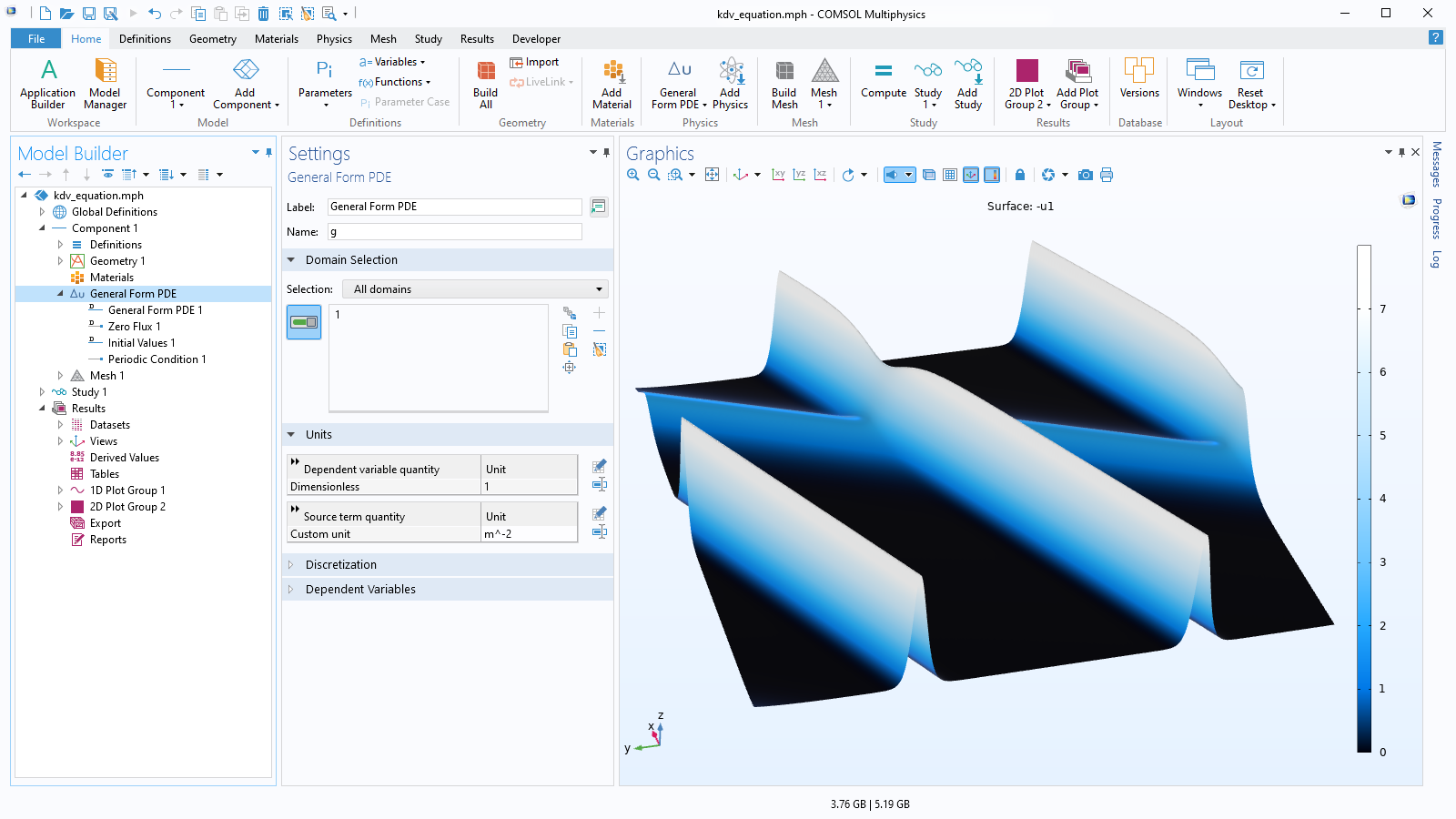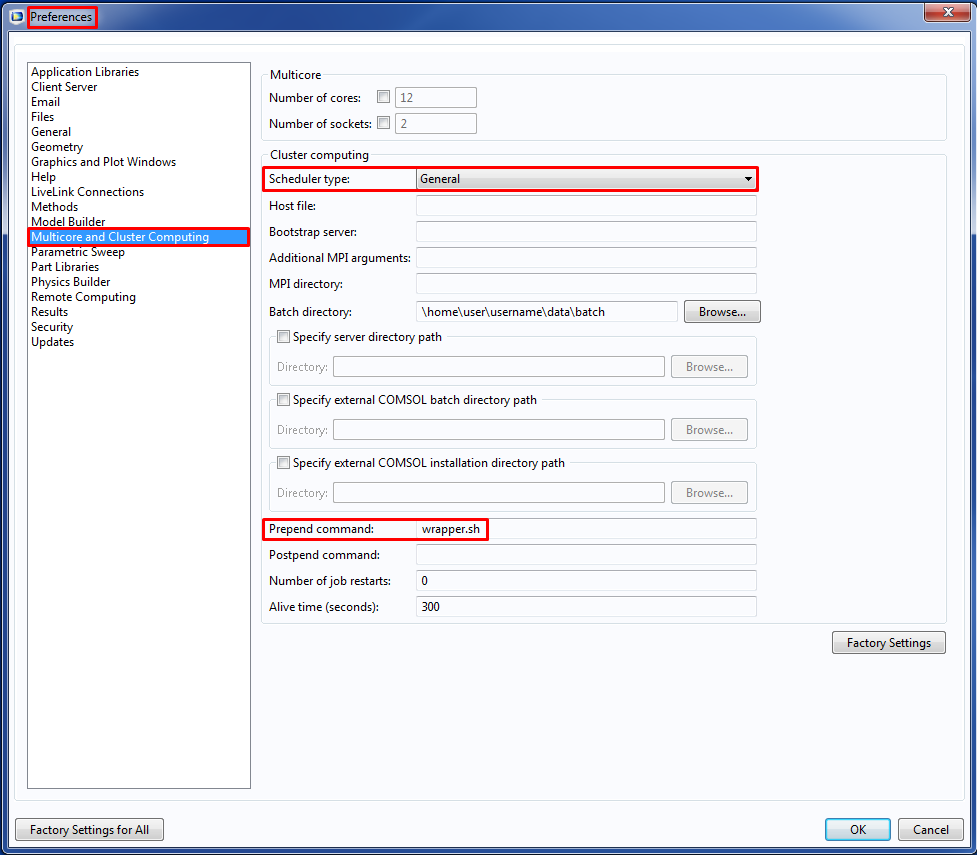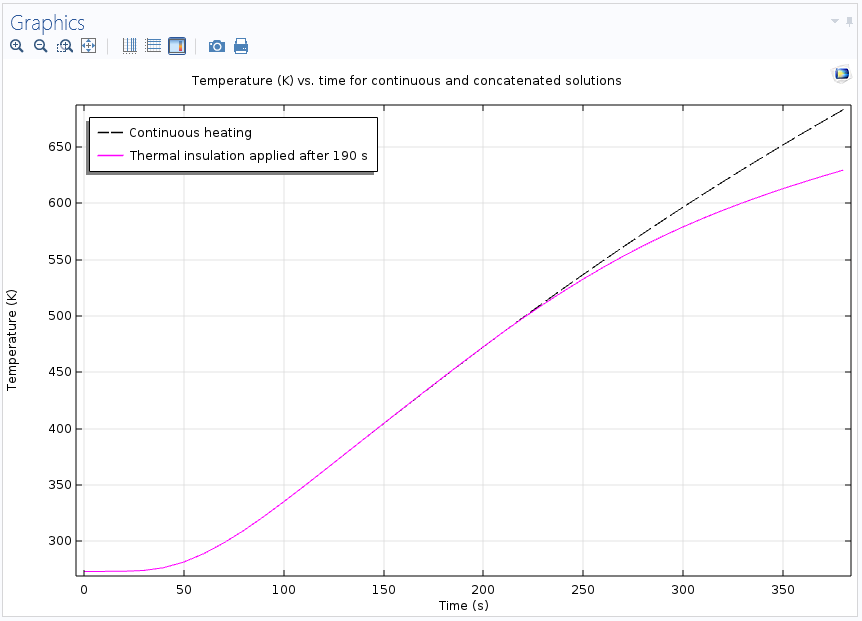
- #Comsol 5.1 add study node how to
- #Comsol 5.1 add study node code
- #Comsol 5.1 add study node download
#Comsol 5.1 add study node how to
Then in the new case B, if I want to put the plots of A and B together in B, how to import the file? I didn't find the import function node in the results node. When I choose Export and choose the 1D plot I need in case A, which format should I choose to export? I tried to follow your method, but was still confused.Ĭould you please give me more detailed instruction?

You can plot the data in the tables using the 1D table plot.įor 2D and 3D plots you can export the data using Results > Export > Plot and import as interpolation functions. Then import the file(s) as tables into the "master" model where you want to perform the comparison.

Pretty-fied representation of a Java object in the model tree.I have built several different 2D models and get result figures from each of the model, I want to know whether it's possible for comsol to draw one figure with all these results in it.įor example, I get the Current vs Time results from several different geometries from different projects, now I want to make a comparison among those figures in one figure.įor 1D plots you can export numerical data from a plot or table to a file. The Comsol documentation explains a lot of 6 Click Add Expression in the upper-right corner of the y. For sensitivity analysis, you can add a Sensitivity study step directly from a main Study node’s context menu (by first selecting the Advanced Study Options on the Model Builder’s Show menu). From the menu, choose Component 1>Definitions>Variables>hsa - Energy loss in shock-absorber. You can use Python introspection to understand how Comsol modelsĪre “created in code”. Solved with COMSOL Multiphysics 5.1 17 S T R E S S E S A N D H E A T G E N E R A T I O N I N L A N D I N G G E A R 5 Click Add Expression in the upper-right corner of the y-axis data section.
#Comsol 5.1 add study node code
You alsoĭon’t need to bother with compiling Java source code to Java classes These Release Notes provide information regarding new functionality in version 5. Occasionally we have to take care of type conversions that JPypeĬannot handle all by itself. Application Builder, COMSOL Compiler, COMSOL Server, and COMSOL Multiphysics® as well as updates and improvements for all COMSOL Multiphysics® add-on products. The current study is a follow-up to 6, 7. graphical user interface (GUI) of COMSOL 5.1. The advantage of using Python over Java is: the detailed instruction on implementing the conv ergence study obtained in Sec. User interface where you can add subnodes to the Linear Elastic Material node to include the effects of. User interface where you can add subnodes to the Linear Elastic Material node to include the effects of Viscoelasticity, Plasticity, Creep, and Viscoplasticity.
#Comsol 5.1 add study node download
The error messages you might receive should point you in the rightĭirection and the JPype documentation would offer help on issues with COMSOL Multiphysics ® 5.1 Release Highlights Download Version 5.1. COMSOL does not support GPU computing as of 2017, and we've not yet written documentation for running COMSOL across multiple compute nodes. Occasionally when translating Java (or Matlab) code you find in theĭocumentation, or a blog post as the case was here, you will have toĪmend code lines such as the one above. COMSOL is typically run on a single non-GPU node.

Created in COMSOL Multiphysics 5. The Python equivalent of just that: a list of these three strings. View highvoltageinsulator.pdf from CHE 1 at National Institute of Technology, Bandung. parameter ( 'd', f ' because Python does not

One way to feed the computed concentration to the Solid Mechanics interface is to specify the desired concentration variable in the combo box of the Hygroscopic Swelling feature. load ( 'capacitor.mph' ) while True : try : d = jobs. Such an approach is used in our MEMS Pressure Sensor Drift due to Hygroscopic Swelling example, new with COMSOL Multiphysics version 5.1. Def worker ( jobs, results ): client = mph.


 0 kommentar(er)
0 kommentar(er)
